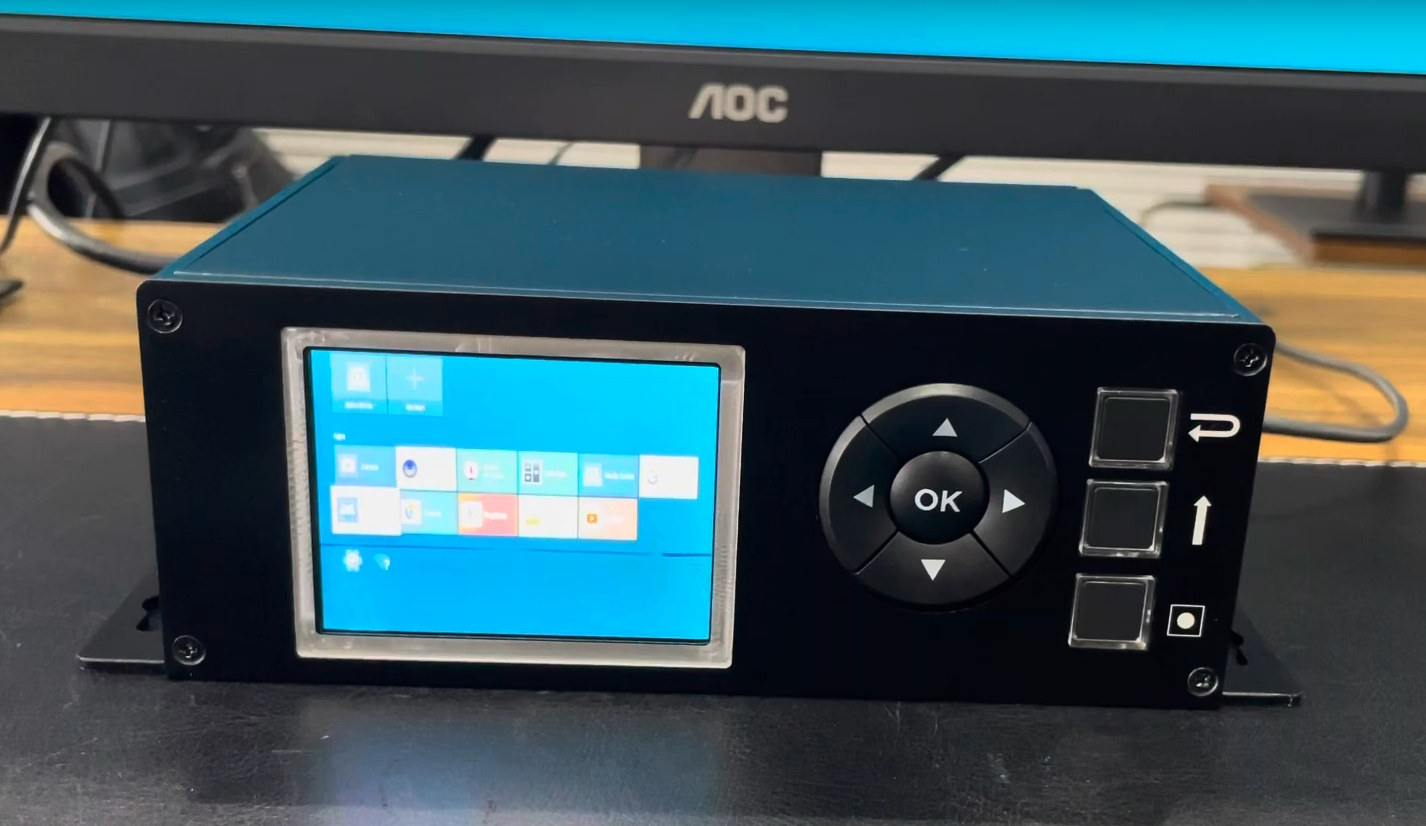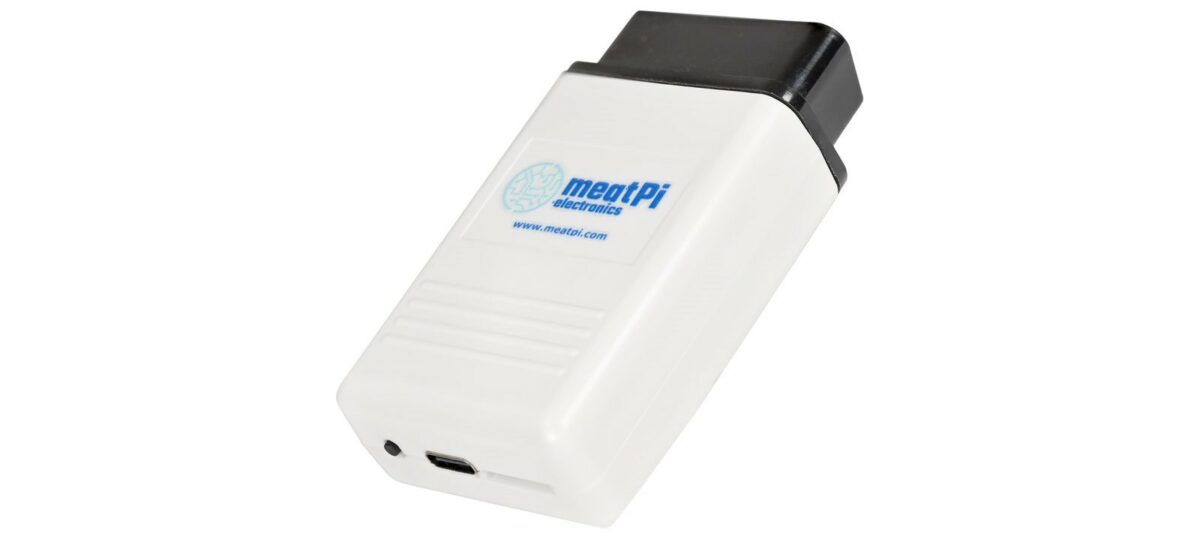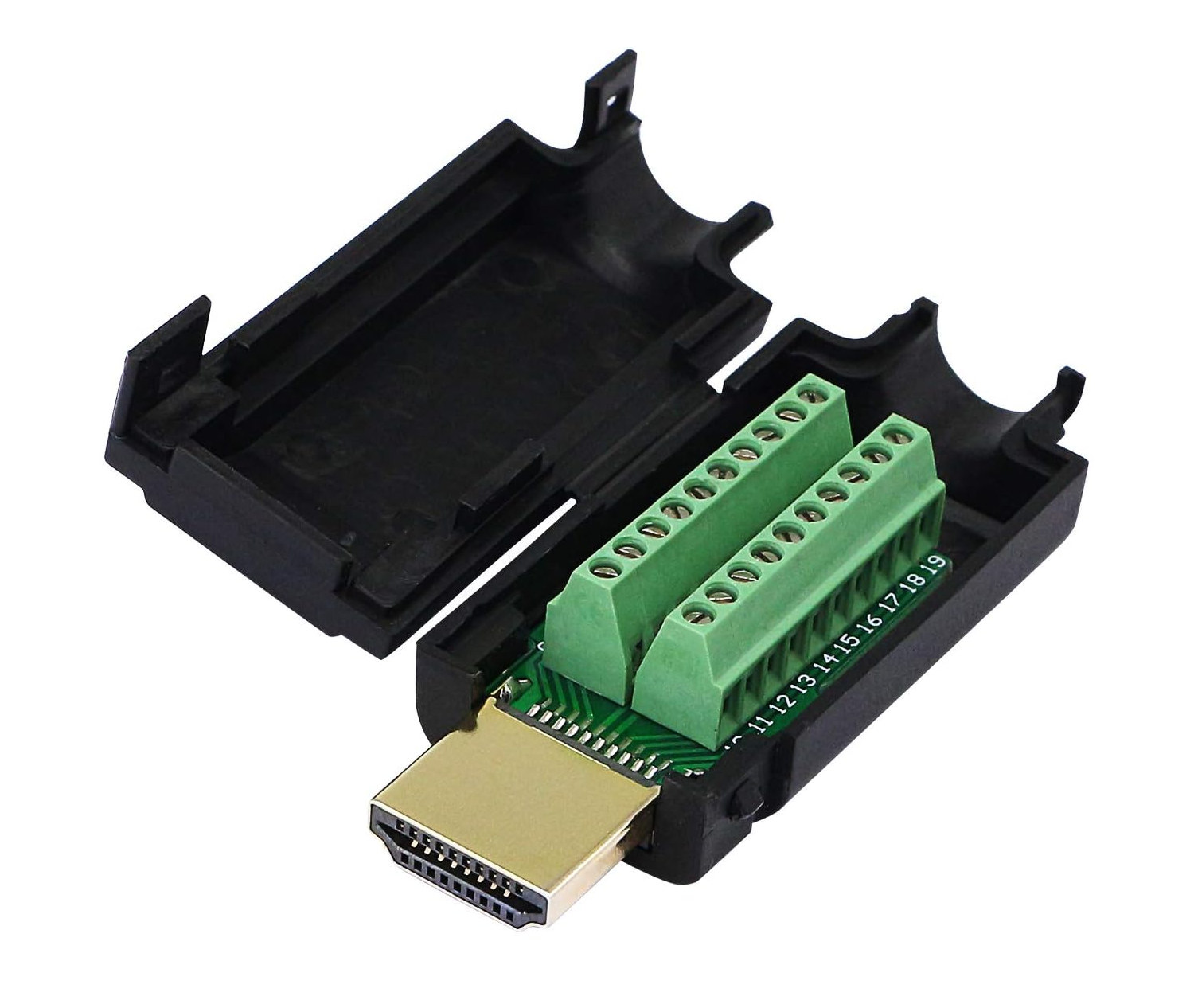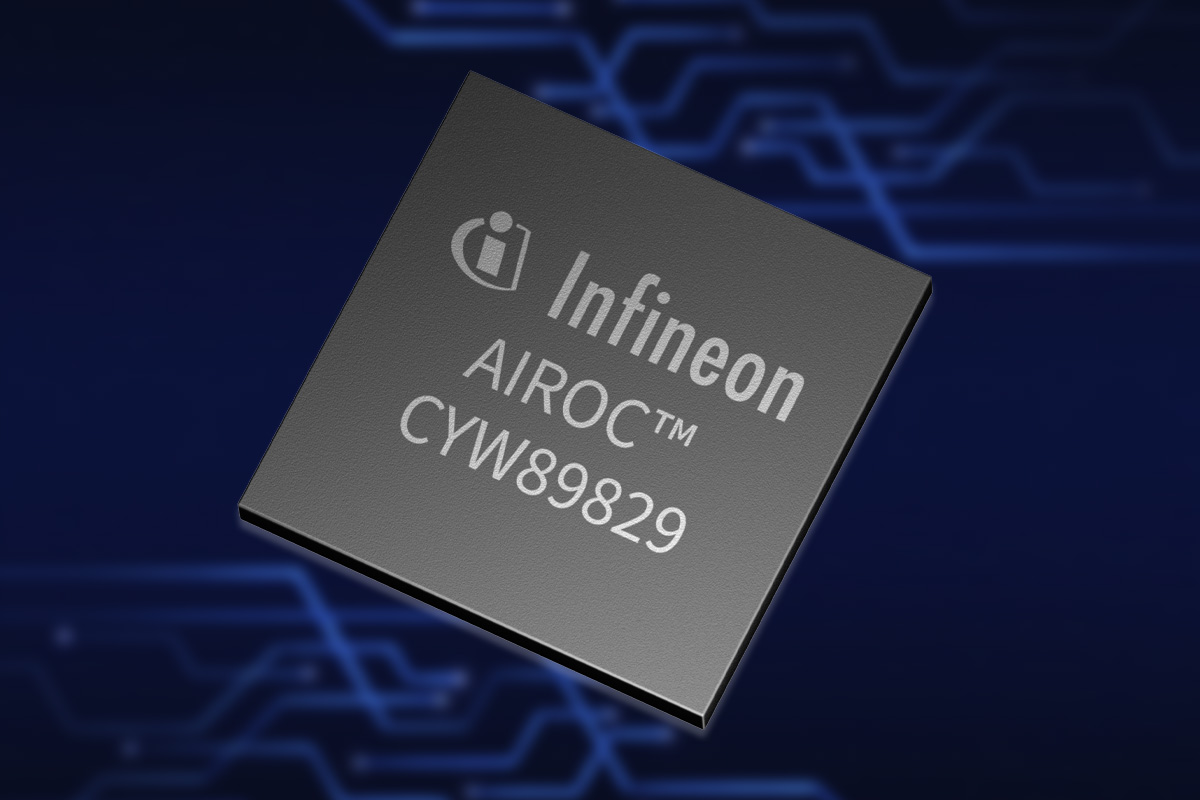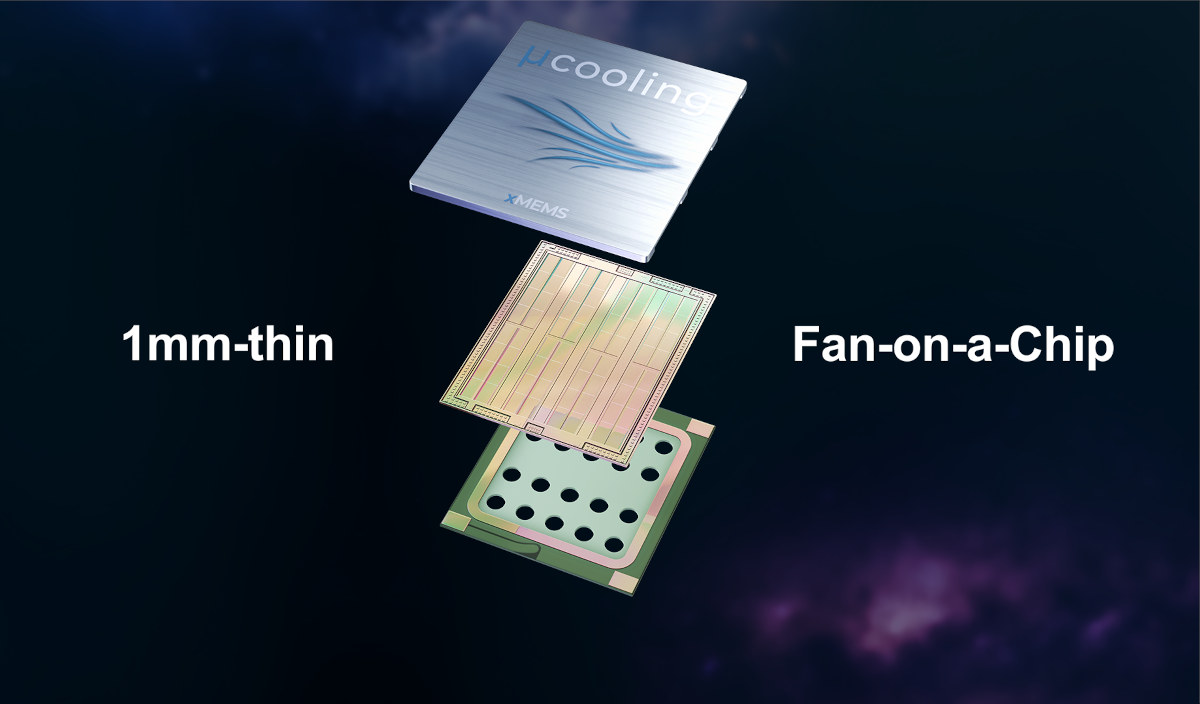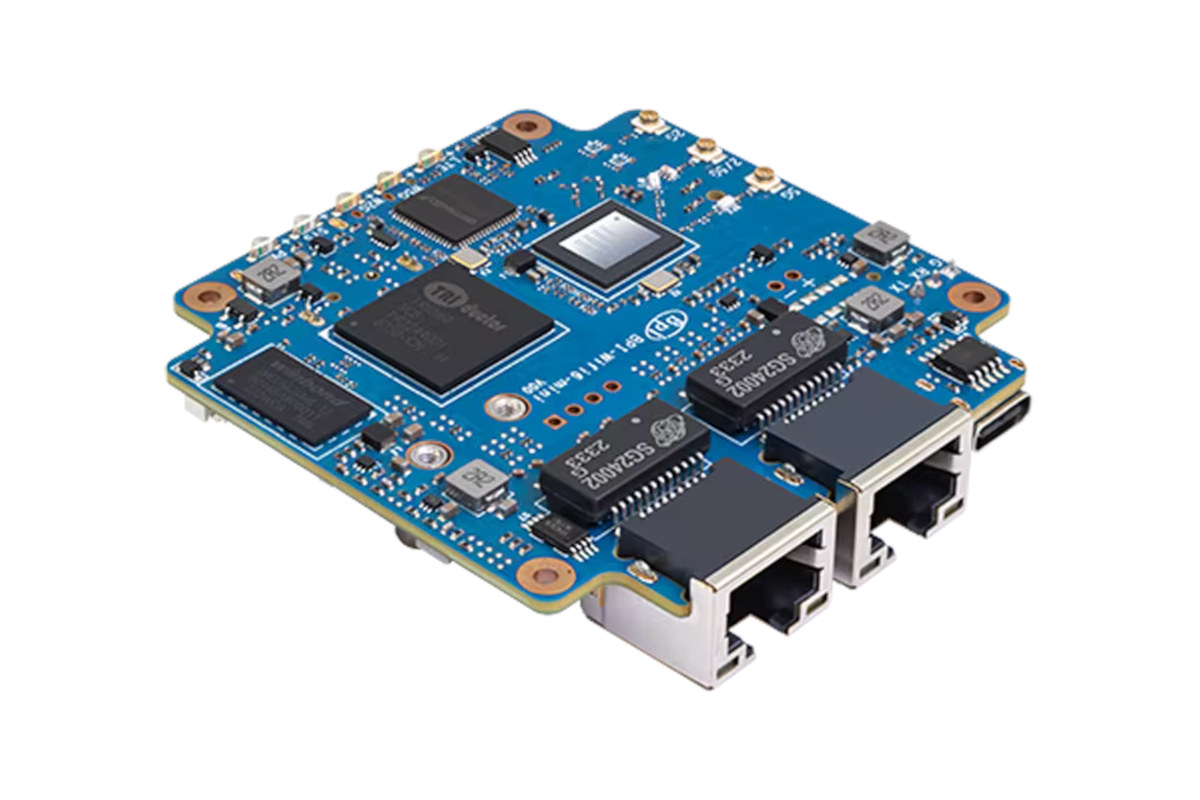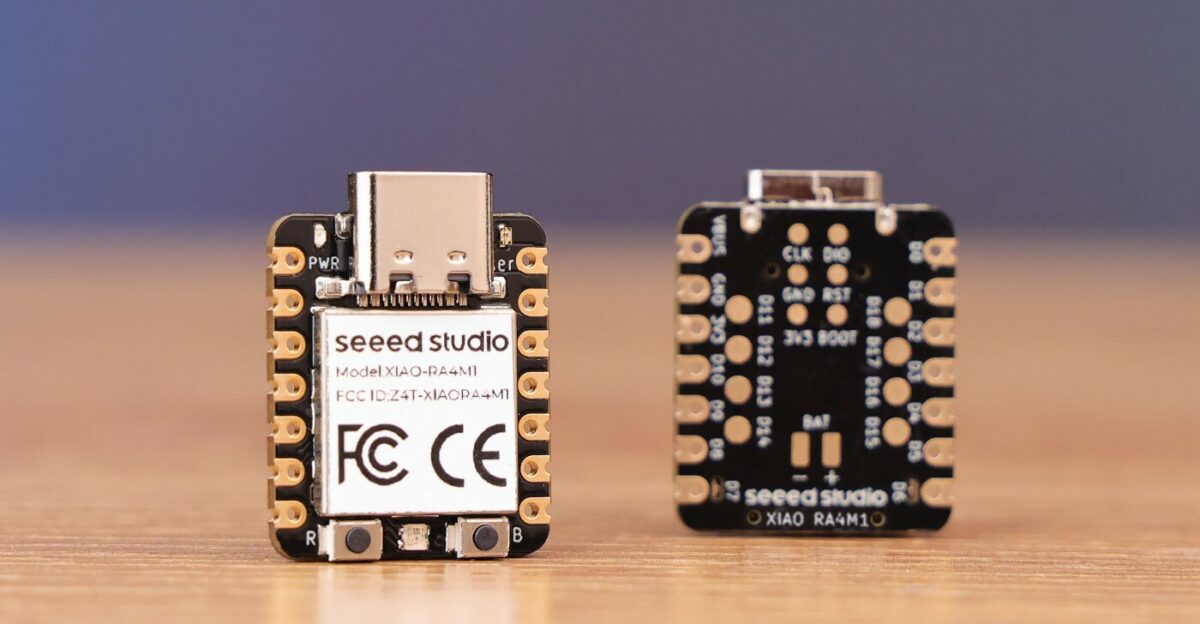Mekotronics R58-4×4 3S is another Rockchip RK3588-based Arm PC and digital signage player from the company with unusual features such as a 3-inch display on the front panel as well as four HDMI inputs supporting up to 4Kp60 sources. The embedded PC features up to 16GB RAM and 128GB eMMC flash, an M.2 PCIe socket for NVMe storage, an 8Kp60-capable HDMI 2.1 video output port, gigabit Ethernet and WiFi 6 connectivity, a mini PCIe socket and NanoSIM card slot for a 4G LTE/GPS module, and more. Mekotronics R58-4×4 3S specifications: SoC – Rockchip RK3588 octa-core processor with CPU – 4x CortexA76 cores @ up to 2.4 GHz, 4x CortexA55 core @ 1.8 GHz GPU – Arm Mali-G610 MP4 GPU with support for OpenGL ES 1.1/2.0/3.2, OpenCL 2.2, Vulkan 1.2 Video decoder – 8Kp60 H.265, VP9, AVS2, 8Kp30 H.264 AVC/MVC, 4Kp60 AV1, 1080p60 MPEG-2/-1, VC-1, VP8 Video encoder – 8Kp30 H.265/H.264 […]
WiCAN Pro – An ESP32-S3-powered OBD scanner for vehicle diagnostics with Smart Home integration (Crowdfunding)
MeatPi Electronics introduced the WiCAN Pro, an ESP32-S3-based OBD scanner, and the successor to WiCAN-OBD. Equipped with an OBD-II interface IC, it provides full support for all legislated OBD-II protocols. It offers compatibility with multiple CAN Bus protocols, including three standard CAN Bus and single-wire CAN Bus. The previous generation WiCAN module came in an OBD or USB-based version. The WiCAN Pro only has an OBD interface, but another significant difference from the previous product is that it features a USB host port. This port can power USB devices up to 1.5 amps at 5 volts and enables capabilities like adding GPS or cellular-based radios, like with meatPi’s ESPNetLink add-on. WiCAN Pro specifications: Wireless Module – ESP32-S3-WROOM-1-N16R8 SoC – Espressif Systems ESP32-S3R8 dual-core Tensilica LX7 @ up to 240 MHz with vector instructions for AI acceleration, 512KB RAM, 8MB PSRAM Storage – 16 MB flash Wireless – 2.4 GHz WiFi […]
HDMI to screw terminal adapters could be useful for Raspberry Pi RP2040 and RP2350 boards
The very idea of an HDMI to screw terminal adapters maybe seem moronic at first, but in an era of programmable IOs (PIO), and high-speed serial transmit (HSTX), those could end up being useful for boards or modules based on Raspberry Pi RP2040 or RP2350 since they’ve all be shown to support DVI output through HDMI connectors. There are a few boards that integrate an HDMI port such as the Olimex RP2040-PICO-PC, Solder Party RP2xxx Stamp Carrier XL, or Adafruit Feather RP2040 among others, but most boards don’t include an HDMI port. What they do typically have are GPIO headers, and an HDMI to screw terminal adapter would allow users to easily add an HDMI port to their existing board without soldering simply by using jumper wires, or with a bit more work an old HDMI cable. All HDMI to screw terminal adapters are pretty basic with an HDMI male […]
Infineon AIROC CYW20829 Bluetooth LE 5.4 MCU and module family targets industrial, consumer, and automotive applications
Infineon has recently released the AIROC CYW20829 Bluetooth LE (Low Energy) 5.4 family which now includes SoCs and modules. These SoCs include two Cortex-M33 MCU cores: one 48 or 96 MHz application core for the peripherals, security, and system resources, and one communication core for the 2.4 GHz RF transceiver with up to 10 dBm transmit power and -98 dBm receive sensitivity. This high integration reduces bill-of-material (BOM) costs for a wide variety of applications, including PC accessories, low-energy audio, wearables, solar micro inverters, asset trackers, home automation, and others. Back in 2021, we saw Infineon release the AIROC CYW5557x family of Wi-Fi 6/6E SoCs for IoT and streaming devices with features like enhanced range and improved network efficiency. More recently, Infineon announced the PSOC Edge E81, E83, and E84 MCU based on Cortex-M55/M33 microcontrollers. Feel free to check those out if you are looking for Infineon-specific MCUs. Infineon AIROC […]
xMEMS XMC-2400 is a 1mm-thin solid-state micro cooling fan-on-a-chip for ultrathin devices and SSDs
xMEMS Labs XMC-2400 is a vibration-free, solid-state micro cooling fan-on-a-chip that’s just 1mm thin and designed to cool the processor, other chips, and batteries on space-constraints devices such as smartphones, tablets, extended reality headsets, laptops, as well as SSDs. The XMC-2400 can deliver up to 39cc/sec airflow and up to 1,000Pa back pressure per instance while remaining inaudible and only consuming an estimated 30mW. It’s also rated IP58 for water and dust resistance. It leverages the manufacturing process the company has been using for its ultrathin MEMS speakers. xMEMS XMC-2400 specifications: Top-venting and side-venting packages for flexible integration in different system form-factors Bi-directional flow rate, adjustable up to 39cc/sec Inaudible; all mechanical operation is at ultrasonic frequencies Power consumption – 30mW (estimated) Dimensions – 9.26 x 7.6 x 1.08 mm Weight – 150 mg SMT-reflowable Ingress Protection – IP58 Two packages will be offered: XMC-2400-S – Side-Vented Package supports chip-stacking […]
ALLPCB – An ideal PCB manufacturer for PCB professionals and businesses (Sponsored)
ALLPCB is an ideal PCB manufacturer for PCB professionals and businesses thanks to additional customization options compared to competitors, monthly discounts for business users, and post-delivery payment options, besides ultra-fast delivery services and quality assurance services. ALLPCB customization options ALLPCB excels at higher specification boards and more complex PCB designs, which is why ALLPCB provides more customized quote options than competitors. Let’s take JLCPCB, one of ALLPCB’s main competitors, as an example starting with “Surface Finish” options for FR-4 material. JLCPCB offers three options, namely HASL (with lead), LeadFree HASL, and ENIG, but ALLPCB offers a total of 12 different surface finish options. That would the the same first three as in JLCPCB, but also OSP, Bare Copper, Immersion Tin, Immersion Silver, Gold Plating, ENEPIG, OSP+ Selective ENIG, Lead-free HASL + Selective ENIG, and Lead-free HASL + Selective Gold Plating ALLPCB also offers a PTH (Plating Through Hole) copper thickness […]
$30 Banana Pi BPI-WiFi6 Mini is a dual GbE and WiFi 6 router board with optional 4G LTE or 5G cellular connectivity
Banana Pi BPI-WiFi6 Mini is an inexpensive WiFi 6 and dual Gigabit Ethernet router board with an M.2 Key-B socket and Nano SIM card slot to add 4G LTE or 5G cellular connectivity. It’s a smaller version of the Banana Pi BPI-WiFi 6 router board based on the Triductor TR6560 dual-core Arm Cortex-A9 processor and Triductor TR5220 WiFi 6 chipset that follows the form factor of the Banana BPI-R3 Mini low-profile router board based on MediaTek Filogic 830 processor. Banana Pi BPI-WiFi6 Mini specifications: SoC – Triductor TR6560 dual-core Arm Cortex-A9 processor @ 1.2 GHz with LSW (Line-Card Switching) and hardware NAT up to 5 Gbps WiFi chipset – Triductor TR5220 WiFi 6 chipset System Memory – 128MB DDR3 Storage – 128MB SPI NAND flash Networking 2x Gigabit Ethernet RJ45 ports WiFi WiFi 6 with 2×2 MIMO @ 2.4 GHz, 2×2 MIMO @ 5GHz Antennas – 2.4GHz antenna connector, 2.4GHz/5GHz […]
XIAO RA4M1 stamp-sized Renesas RA4M1 USB-C board features 14-bit ADC, 12-bit DAC, CAN Bus interfaces
Seeed Studio has added yet another member to their XIAO board family with the XIAO RA4M1 powered by Renesas’ RA4M1 32-bit Arm Cortex-M4 MCU. This compact board includes 256KB Flash, 32KB SRAM, a 14-bit A/D converter, a 12-bit D/A converter, a CAN bus interface, and onboard charging circuitry. It’s designed for low-power, battery-powered applications. The company started the XIAO family with the Seeeduino XIAO (Microchip SAMD21G18) in 2020, and since then they’ve made several other variants with different processors including the XIAO RP2350, XIAO RP2040, XIAO ESP32C3, XIAO ESP32S3, XIAO ESP32C6, and the nRF52840-based XIAO BLE. Feel free to check them out if you are interested in these boards. XIAO RA4M1 specifications: Microcontroller – Renesas RA4M1 (R7FA4M1AB3CFM) as found in Arduino UNO R4 CPU – Arm Cortex-M4F operating at up to 48 MHz Memory – 32KB SRAM Storage 256 KB code flash memory 8 KB data flash memory USB – 1x […]


